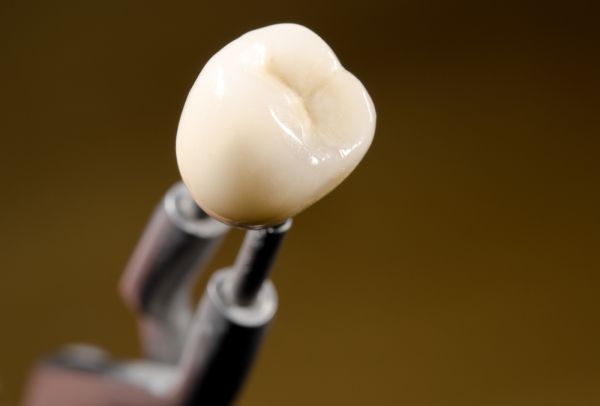A Guide to Your Dental Crown Procedure

Dentists call for dental crowns for different reasons. They can fix broken teeth as well as strengthen teeth. Crowns can also hold a dental bridge in place or cover up a tooth to prevent infection. If your dentist recommends a dental crown procedure, these are a few things you need to know.
Different types of dental crowns
Temporary crowns
These crowns can be made at your dentist’s office. They provide temporary coverage for your tooth while a permanent crown is being made at a laboratory. They are usually made of stainless steel or an acrylic-based material.
Metal crowns
These are the most durable dental crowns and rarely chip or break. They contain metal alloys with a high content of gold or platinum and are mostly used on molars because of their metallic color.
Porcelain or ceramic crowns
Dentists commonly use these crowns because they blend in better with natural teeth. They are also an alternative for people who are allergic to metal.
Resin crowns
Resin crowns are the least expensive type. That said, they wear down faster than the other crowns and are prone to fracturing.
Porcelain-fused-to-metal crowns
These can be color-matched to your other teeth, but these crowns create more wear to opposing teeth than resin or metal crowns. The porcelain part can also break off. You can use a porcelain-fused-to-metal crown on both front and back teeth.
Getting ready for a dental crown procedure
A dental crown procedure requires two visits to the dentist.
First visit
The first is to examine and prepare the tooth. Your dentist will take X-rays of the tooth to check root health. If there is decay or injury to the pulp, they will likely recommend a root canal.
Before your dentist makes the crown, they will numb the tooth and the tissue around it. Next, the dentist will file the tooth to make room for the crown. The size of the crown depends on the amount of the tooth that is damaged or decayed.
Your dentist will then make an impression of the tooth using a paste and a digital scanner. They will also make an impression of the teeth above and below the affected tooth to make sure your bite is not affected by the crown.
The impression will then be sent off to a dental laboratory for production. Since it can take up to two weeks before your dentist receives the crown, they will fit you with a temporary crown.
Second visit
Your dentist will remove the temporary crown and replace it with the permanent crown. First, the dentist will check to make sure it fits and the color matches your other teeth. If everything is fine, they will numb your tooth and attach the new crown.
Once your permanent crown has been fitted, your dentist will recommend that you avoid chewing on the tooth for a short while. They may also say to stay away from sticky foods that can damage your crown. If you tend to grind your teeth, your dentist will likely recommend you sleep using a mouth guard to prevent wearing down the crown.
Conclusion
Dental crowns are very useful because they protect damaged teeth and save you from pain. Now that you know what to expect, you should look forward to beginning the process of getting a new smile.
Request an appointment here: http://www.simplysmilesdentist.com or call Simply Smiles Dentistry at (520) 368-3351 for an appointment in our Tucson office.
Related Posts
Getting a dental crown is a seamless procedure that is done in dental offices every day. There are various reasons to get a dental crown, which will play a role in how the process goes. For example, for those getting a crown to finish the tooth replacement process after an implant has been inserted, the…
While the cost of dental crowns is usually covered by insurance, getting a crown can still be an expensive and time-consuming process. Once the crown is in place, it can be tempting to forget about it and continue your normal habits, but not being mindful of your tooth restoration could lead to you having to…
Dental crowns and veneers can both restore the function and appearance of damaged teeth. That damage can take the form of decay, discoloration, chips or cracks, or a crooked appearance. The main difference is that a crown goes over the whole tooth, whereas a veneer only sits on the front. Beyond that, there are pros…
Dental crowns are protective covers or caps that fit over the visible portion of teeth. Over time, teeth endure damage from injuries, tooth decay and other wear and tear. Teeth might become misshapen, cracked, or decayed. Professionals cement the crown atop the tooth to restore its strength, appearance, and size.Crowns may consist of various materials,…
